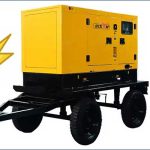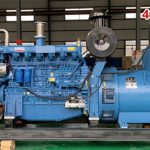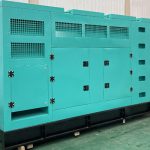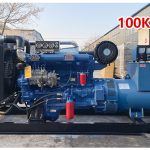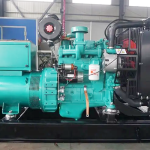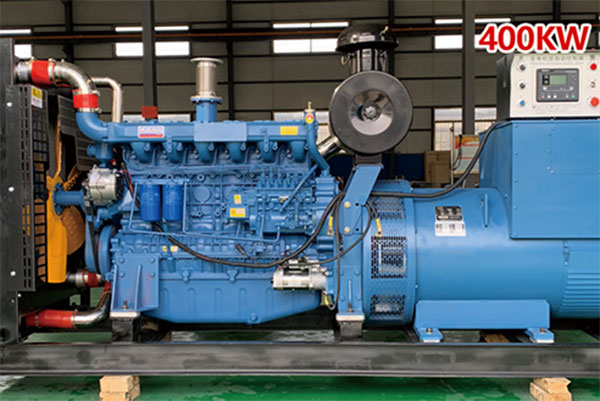Diesel generators are widely used in various industries, providing a reliable source of backup power during outages or serving as a primary power source in remote locations. However, one of the key considerations for both purchasing and operating a diesel generator is the overall operating cost. This cost can vary significantly depending on the size of the generator, the fuel consumption, and the maintenance required to keep the unit running efficiently. In this blog, we will delve into the major factors that influence diesel generator operating costs, helping you better understand what to expect from an engineering perspective.
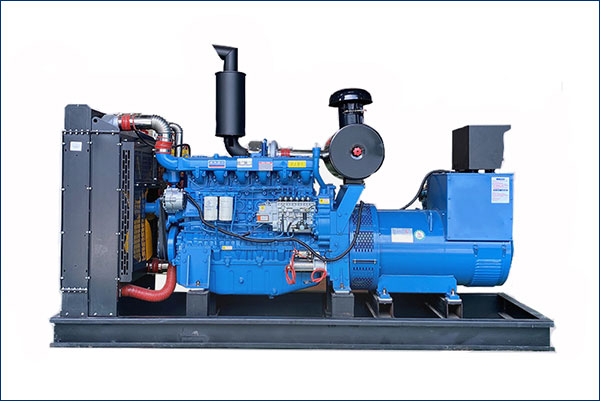
1. Fuel Consumption
Fuel is one of the largest contributors to the operating cost of a diesel generator. Since diesel generators run on diesel fuel, understanding how much fuel is consumed per hour of operation is crucial. Fuel consumption is typically measured in liters or gallons per hour and is largely dependent on the load the generator is handling.
For instance, a generator running at 75% load will consume more fuel than when it is running at 50% load. In practice, most diesel generators are most fuel-efficient when operating at around 70-80% of their rated capacity. Running a generator below this threshold can lead to inefficiencies, as diesel engines are designed to operate under load. Therefore, matching the generator’s capacity to the expected power demands is critical in minimizing fuel costs.
In addition, local fuel prices also have a significant impact on the overall operating costs. Diesel prices fluctuate based on supply and demand, seasonal factors, and geopolitical events. As a result, businesses that rely heavily on diesel generators should monitor fuel prices closely and may even consider bulk purchasing to mitigate price volatility.
2. Maintenance Costs
Beyond fuel, maintenance is the next significant factor in the diesel generator’s operating cost. Like any other machine, a diesel generator requires regular maintenance to ensure its reliability and longevity. Key maintenance tasks include changing the oil, replacing filters, and inspecting critical engine components for wear and tear.
Maintenance intervals are generally specified by the generator’s manufacturer and are often based on the number of hours the generator has been in operation. For example, a typical maintenance schedule may require an oil change every 250-500 hours of operation. Neglecting these routine tasks can lead to more serious issues down the line, such as engine failure, which would result in more expensive repairs or even the need to replace the entire generator.
One way to reduce maintenance costs is by ensuring that the generator is operating under optimal conditions. For instance, keeping the generator in a clean, dust-free environment can prevent the buildup of debris, which can harm engine components. Additionally, monitoring the generator’s usage patterns and performing preventative maintenance can help to avoid costly breakdowns.
3. Lubrication and Coolant Costs
Lubrication and coolant are often overlooked when calculating the operating costs of a diesel generator. However, they play a crucial role in ensuring that the engine runs smoothly and efficiently. Diesel engines generate significant heat during operation, so an efficient cooling system is necessary to prevent overheating.
Over time, coolant can degrade and become less effective, requiring periodic replacement. Likewise, the engine oil must be replaced regularly to ensure proper lubrication of internal parts, which reduces friction and wear. Using high-quality lubricants and coolants can prolong the intervals between servicing, ultimately reducing the long-term operating costs.
4. Replacement Parts and Repairs
No matter how well-maintained a diesel generator is, parts will eventually wear out and need replacement. The cost of replacement parts depends on the type and size of the generator. Commonly replaced components include belts, hoses, fuel injectors, and batteries. While these parts are relatively inexpensive compared to major engine components, their replacement should still be factored into the overall operating cost.
Occasionally, more significant repairs may be required, especially if the generator has been in operation for several years. Rebuilding or replacing the engine is one of the most expensive repairs, but it is typically only necessary for older generators. To minimize repair costs, many operators choose to purchase extended warranties or maintenance contracts, which cover the cost of certain repairs over the generator’s lifespan.
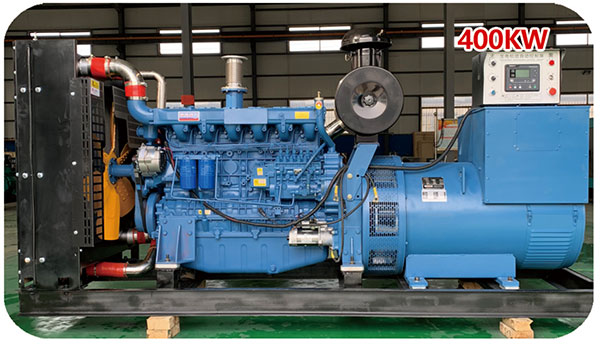
5. Operating Environment
The environment in which the diesel generator is used also has a significant impact on operating costs. Generators operating in harsh conditions, such as extreme temperatures or high humidity, will experience higher wear and tear. These conditions may require more frequent maintenance and lead to faster degradation of parts.
6. Load Factor
Load factor refers to the ratio of a generator’s average load to its rated capacity. Operating a diesel generator at a low load for extended periods can lead to “wet stacking,” a condition where unburned fuel accumulates in the exhaust system, causing damage over time. Conversely, operating the generator at a consistently high load can increase wear on engine components, reducing the lifespan of the unit.
To optimize the diesel generator’s performance and operating cost, it’s important to ensure that it operates at an appropriate load for most of its runtime. Generators that are properly sized for their intended application tend to have the best balance between efficiency and maintenance costs.
7. Generator Efficiency and Technological Advances
Another important factor that can influence the operating cost is the efficiency of the generator itself. Advances in technology have led to more fuel-efficient diesel generators, reducing fuel consumption and emissions. Many modern diesel generators come equipped with advanced controls that optimize fuel delivery based on real-time load conditions, ensuring that the generator operates at peak efficiency.
Additionally, some models are designed to reduce noise and vibration, which not only improves the generator’s operating environment but also extends the lifespan of its components, reducing the need for frequent repairs.
8. Total Cost of Ownership
When evaluating the operating cost of a diesel generator, it’s important to look at the total cost of ownership over the generator’s lifespan. This includes not only the initial purchase price but also ongoing costs such as fuel, maintenance, repairs, and replacement parts. While the upfront cost of a diesel generator may be higher than other power generation options, its long lifespan and reliability can make it a more cost-effective solution in the long run.
By investing in a high-quality diesel generator and performing regular maintenance, businesses can ensure that they get the most value from their investment, minimizing downtime and maximizing productivity.
Conclusion
Operating a diesel generator comes with various costs, ranging from fuel consumption to maintenance and replacement parts. However, by understanding these costs and taking proactive measures to optimize the generator’s performance, businesses can significantly reduce the overall operating expenses. By focusing on efficiency, regular maintenance, and proper load management, diesel generators can provide reliable and cost-effective power solutions for years to come.






